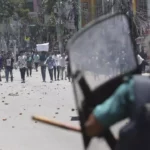An Asia based insect is posing problems for Crape Myrtle trees across the state of Alabama.
Arborists refer to the insect as the Crape Myrtle Bark Scales.
The white oval shaped insects can do major damage to crape myrtle trees.
Experts say bark scales are not a death sentence for your crape myrtle if treated within the first few months of being infected.
The later you wait for that treatment the more likely your tree could be destroyed.
Once the insect has invaded the tree it will being multiplying and excreting honey dew.
This will leave a black soot- like mold on your tree.
Dr. Jim Jacobi, an Alabama Extension plant pathologist, says an abundance of that black substance usually means a tree has likely been diseased for a few months to a year.
“You really notice that everything is starting to turn black. The stems of the tree are turning black the leaves are turning black and everything underneath the tree is also turning black,” said Dr. Jacobi.
Local arborist Mara Wood says ants enjoy feeding off of this substance and will try to protect the bark scale from other potential predators.
That high presence of ants could be the first sign to appear if your tree is diseased.
“[Ants] defend [bark scales]. So a lot of time when you’re seeing lots of ants inside of your tree look closely to where they’re congregating,” said Wood.
Experts suggest using a systemic insecticide for treatment. This process can take several months and could take an entire year before the tree is completely healthy again.
“[Bark Scales] are from Asia. They’re slowly making their way here so they don’t have a lot of predators,” said Wood. “It’s a hard thing to manage but if you’re taking those preventative measures you can make a big difference.”
Wood says if you only see a few of these white insects on your tree you can easily remove them yourself by washing the tree.
After all of the insects have been removed you should continue to treat it consistently. At least one time per year.
Source : ABC 3340 News















